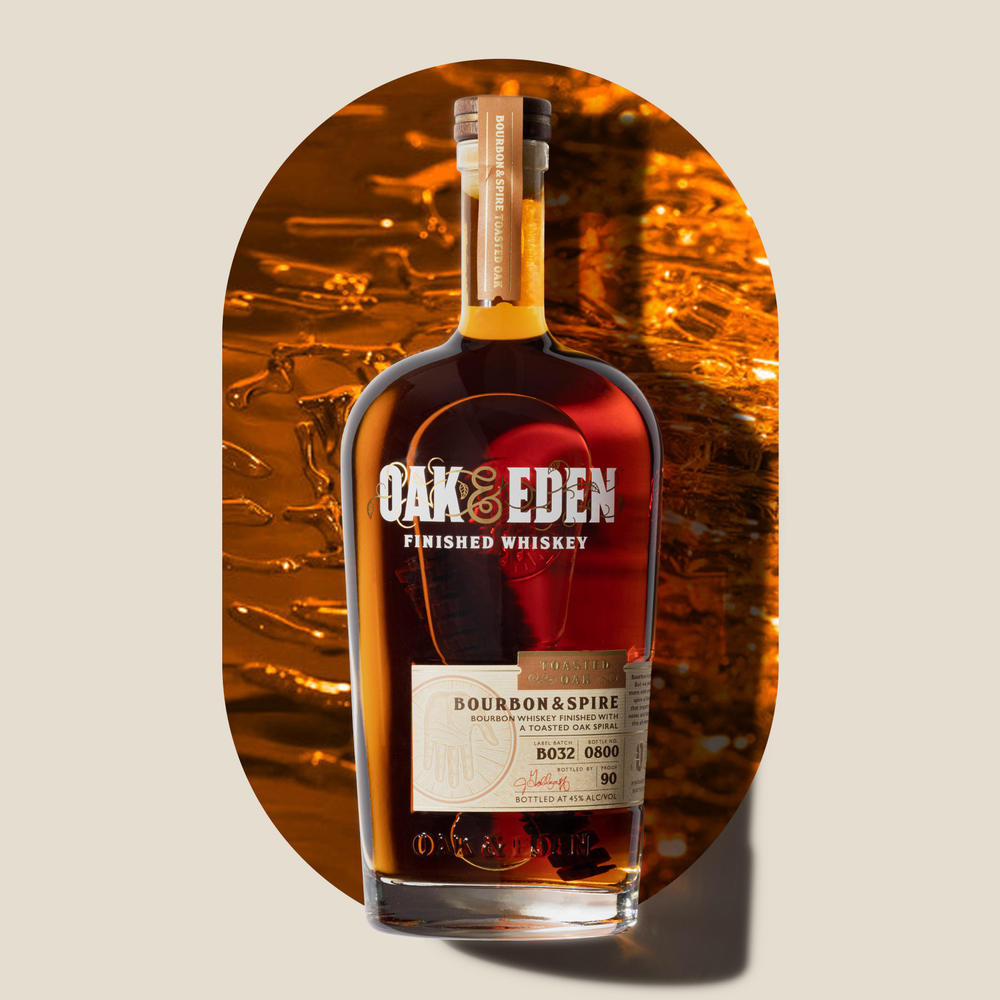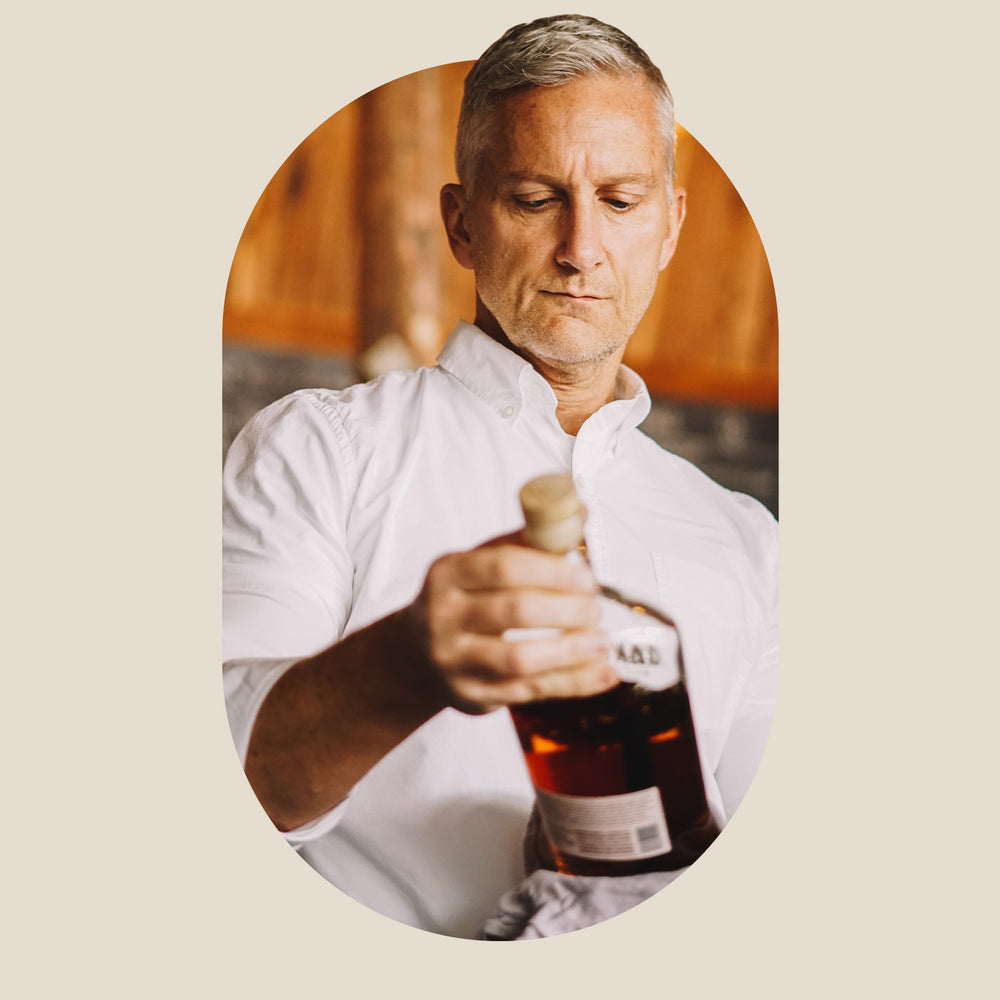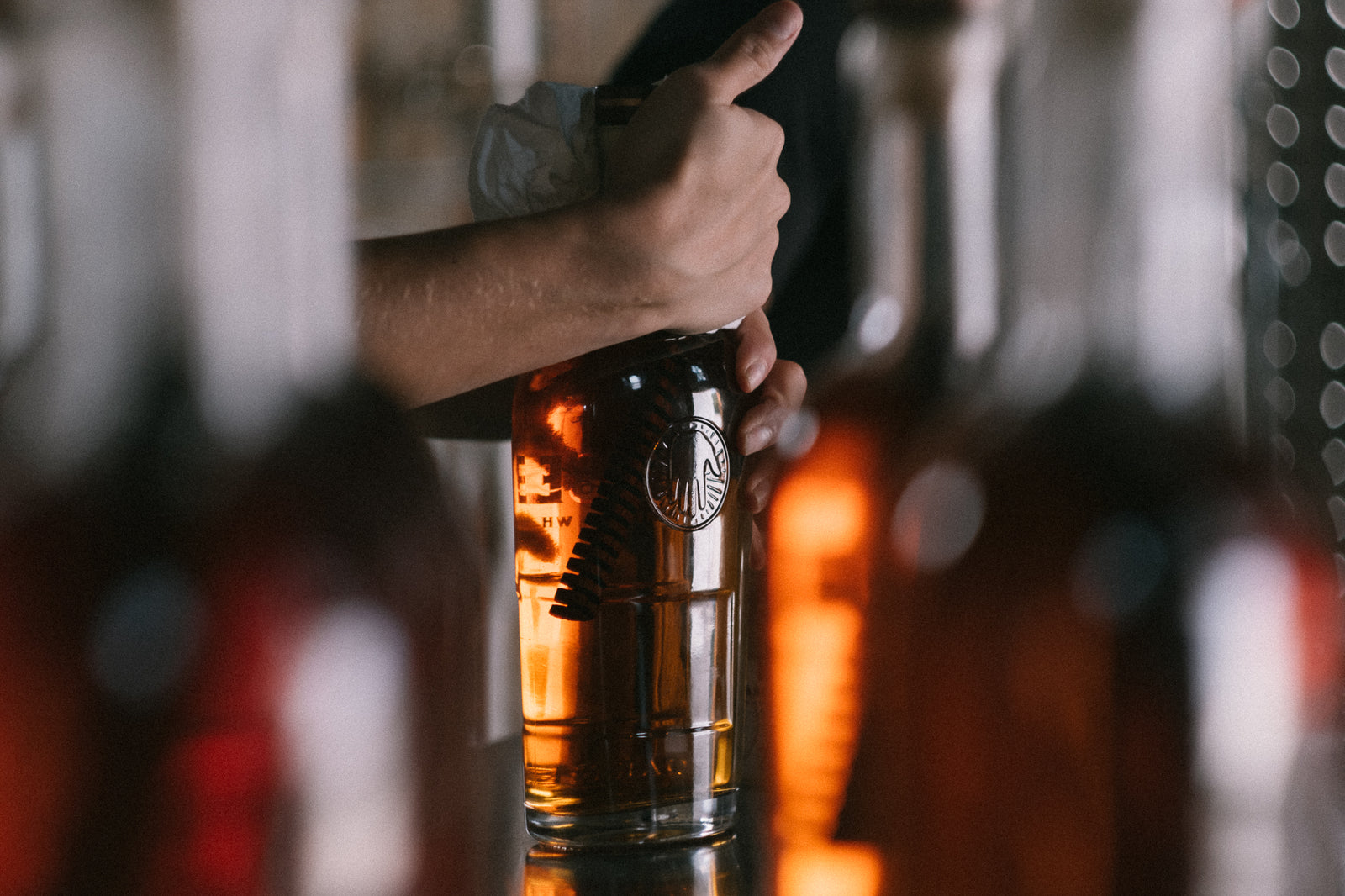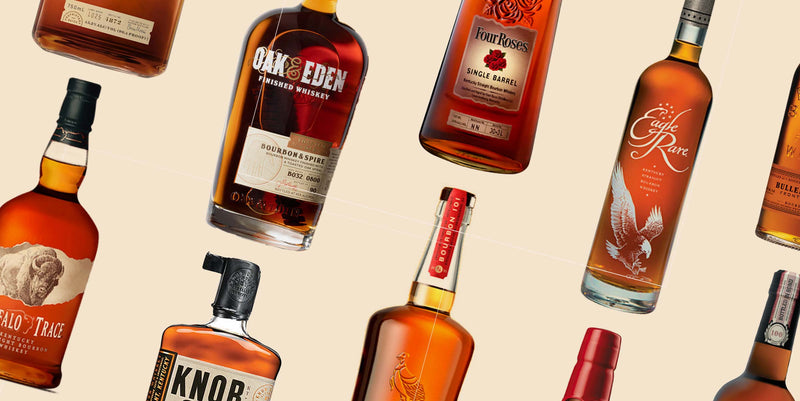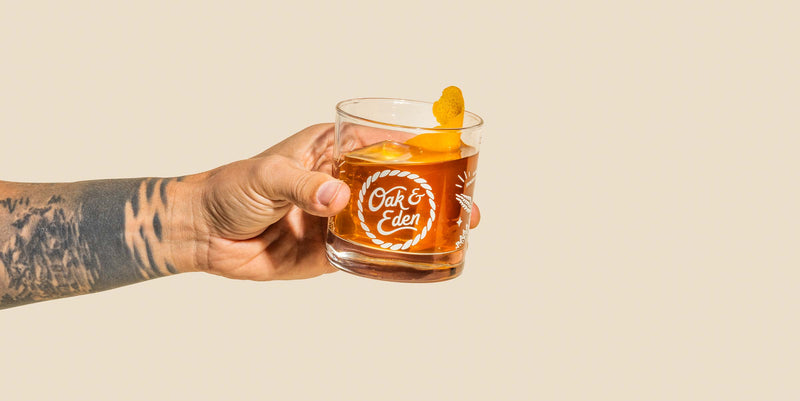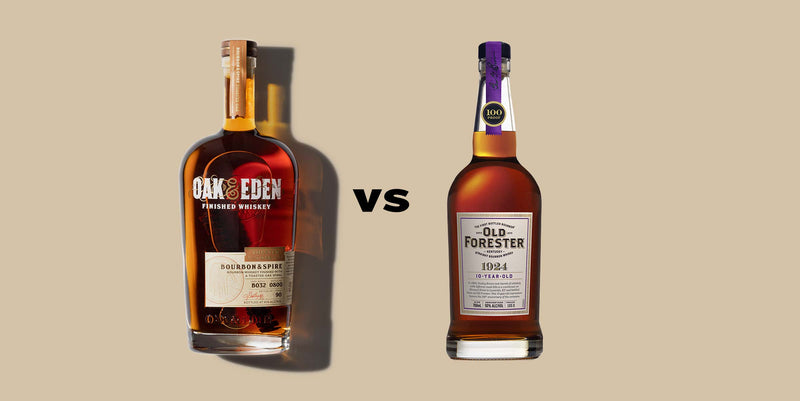How Long Is Bourbon Aged?
Bourbon is a drink that we all know and love. For us, it’s our favorite spirit. Bourbon is the official distilled spirit of America, and as such can be found on the shelves of nearly every bar stateside.
Bourbon is aged alcohol, meaning it must be aged in order to legally be considered a bourbon. In fact, aging is one of the most important aspects of making bourbon and whiskey in general.
But how long is whiskey aged for? There are some scotch and Irish whiskies that are aged for decades, but what is the standard here in America?
Here’s a full breakdown of the aging process of bourbon so that you know the truth about how long bourbon is aged.
What Is Bourbon?
Bourbon whiskey is a type of American whiskey that is made predominantly from corn. It’s the first corn-based whiskey that the world became familiar with. Bourbon whiskey gets its name from Bourbon County in Kentucky, where it was first produced. Despite its popularity, Bourbon has only been labeled as such since 1840, meaning bourbon is less than 200 years old.
Bourbon is made of fermented grains, a majority of which has to be corn and the rest of which can be any combination of cereal grain, often including wheat, rye, and barley. Bourbon is also an aged liquor, just like all whiskey.
Whiskey gets its color from the aging process, and a majority of its flavors are developed during aging as well. This makes the aging process perhaps the single most important part of the bourbon-making process.
The result of this long-term aging is a smooth, amber-colored spirit with a distinctively sweet flavor. Today, bourbon is enjoyed all over the world, and it is one of the most popular types of whiskey. Whether you enjoy it neat, on the rocks, or in a cocktail, there’s no doubt that bourbon is a truly unique and delicious spirit.
How Long Is Bourbon Aged?
The question at the heart of this is how long bourbon is aged, and the answer is that it depends. But, we can get a bit more specific to give you the ideas of the age range that is common for bourbon makers.
The legal requirement (yes, there are legal requirements for the aging of a bourbon) is that every bourbon must be aged two years before it can be bottled. But, just because that is the legal minimum doesn't mean that all bourbons are only two years old.
In fact, a vast majority of the bourbons that you come across are aged for at least four years, and any bourbon that is aged less than four years must state the age of the whiskey in the bottle. There is no upper limit to whiskey aging — many distillers use a seven-year, while others offer premium or select agings that are as much as several decades old.
What Is the Bourbon Aging Process?
The aging process is the longest part of the bourbon-making process. Here is a deeper dive into the aging process and how aging impacts bourbons.
The Rules of Bourbon Aging
All bourbon has to be aged in new, charred oak barrels. What this means is that the wood has to be new and it can't have been used in a barrel previously. It also means that the inside of the barrel has to be exposed to fire before the barrel can be filled (that’s what the char is). Depending on the distiller and the whiskey the char level can range from a light toasting to a complete blackening of the interior of the barrel.
Bourbon also has to be aged for a minimum of two years, and most will be aged for four years or more. This is because the longer a whiskey is left to age, the more flavors will be imparted to the whiskey — but how?
How Bourbon Aging Works
As we mentioned earlier, the whiskey barrels are liquid-tight, so the whiskey stays in them, but they are not airtight, so they are susceptible to the temperature and humidity changes of the aging chamber. Another important thing to understand is that wood is porous, meaning it can be permeated by liquids.
As the bourbon whiskey rests in the barrel, the whiskey permeates the charred wood on the interior of the barrel. As the barrel expands and contracts with the temperature and humidity changes of the seasons, the wood pulls in and pushes out whiskey accordingly. When the whiskey is pushed out of the wood it brings with it botanicals and other flavor and coloring agents with it, which provide the flavors for the whiskey.
The longer a whiskey ages, the more time it has for this process to repeat over and over again. This makes a difference, but up to a point. Think about it like a bag of tea — the longer you steep the tea the stronger the tea will be. But if you were to leave the tea bag in there for two minutes compared to three minutes it would make a much bigger difference than one hour compared to five hours.
What Is the Angel's Share?
There is one more element of the aging process that is critical to mention: the angel's share. The angel's share is a phenomenon that was first noticed and named by the Christian monks who first distilled whiskey, and always has been a part of whiskey making.
When the whiskey is aged in barrels that are not airtight, this means that liquid can escape if it turns into a gas. Over the aging process, a portion of the whiskey in the barrel is lost by evaporation. The longer the whiskey is aged, the more is lost in the process.
The angel's share does cause one pretty cool side effect: the alcohol vapors are very noticeable in the aging room, giving the room the sweet smell of caramel whiskey. When the monks who first aged whiskey realized this, they called it the angel's share, explaining it as the portion the angels drink.
It’s also a part of the reason why bourbon which is aged longer typically costs more — it requires more raw product to get the same amount of liquid the longer you age the whiskey.
What Is Finished Bourbon?
The final element of bourbon aging that you should know about is finished bourbon — a type of bourbon you have likely come across before. A finished bourbon or finished whiskey is just a bourbon or whiskey that has been aged for the legal requirement of two years in new, charred oak barrels which then goes through one more step.
Instead of going into the bottle, finished bourbon goes into another barrel. This time, this barrel can be any kind of wood that the distiller would like to flavor the whiskey as seen fit. Here at Oak & Eden, we have our own unique spin on the finishing process.
Every bottle of Oak & Eden whiskey contains a wooden spire, a spiral-cut piece of wood that has been selected and toasted or charred to order for each different whiskey that we make. This means that your Oak & Eden whiskey gets a finishing touch while it rests in the bottle on your bar shelf.
The Legal Requirements for Bourbon
Before we finish, here is a quick final overview of the legal requirement for a whiskey to be labeled a bourbon in the United States of America:
- Bourbon must be made and aged in the United States, and if it is to be labeled a Kentucky bourbon, then it must be made and aged in Kentucky.
- Bourbon must be made with a mash bill of 51% corn or more.
- Bourbon cannot be distilled to more than 160 proof.
- Bourbon cannot enter the barrel at more than 125 proof.
- Bourbon must be aged for a minimum of two years in new, charred oak barrels. If aged less than four years, the age must be printed on the label.
- Bourbon may not be bottled below 40% ABV.
How Long Is Bourbon Aged: Takeaways
Bourbon whiskey, and all other whiskeys are aged. That is where they get a majority of their wonderful flavors and all of the beautiful amber color. The aging process is one of the most important and most regulated portions of the whiskey-making process.
Bourbon is aged for a minimum of two years in new, charred oak barrels. If bourbon is aged for less than four years, then it must say the age on the label. The aging process is a complex and long process that uses the temperature and humidity changes of the seasons to create delicious bourbon.
At Oak & Eden, we take things one step further with our spires. These spires are at the heart of our in-bottle finishing technique, which gives a finishing touch to our bourbons and whiskeys while they rest in the bottle.
Check out our bourbons, ryes, and other whiskeys here.
Sources:
What is Kentucky Bourbon Whiskey? | BourbonCountry

